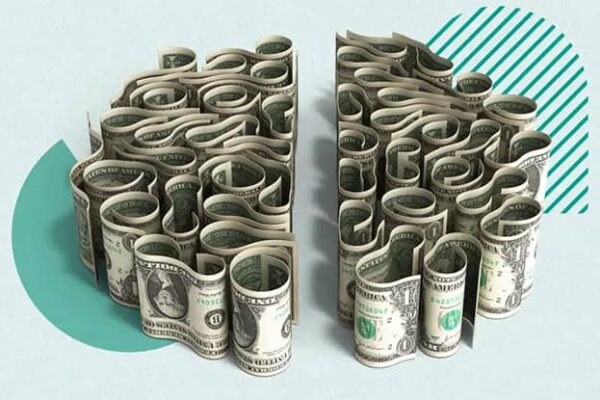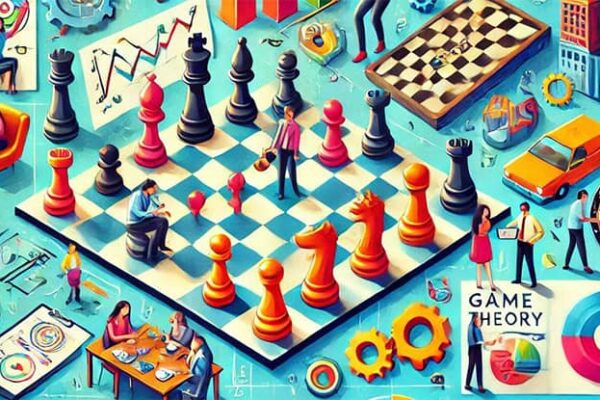In a world where we are bombarded with streams of information daily and decisions need to be made quickly and accurately, analytical thinking becomes not just a useful skill—it is a key competitive advantage. It allows us not just to memorize facts but to understand interconnections, spot hidden patterns, and make well-considered decisions even in uncertain conditions.
Imagine your brain as a powerful processor capable of not only processing data but also predicting outcomes, finding non-obvious solutions, and avoiding cognitive traps. This is exactly what we will learn over the course of 30 days.
But why 30 days? Neuroscience confirms: with regular training over a month, you can form new neural connections, changing the very way you think. This is not magic but a systematic approach. You will begin to notice how you automatically break down complex problems into parts, spot logical errors in other people’s arguments, and find optimal solutions even in everyday situations—from budgeting to negotiations.
In this program, I have combined scientific methods and practical exercises: from basic techniques like problem decomposition and cause-and-effect analysis to advanced tools—thought experiments and working with large datasets. You will learn how Sherlock Holmes extracts crucial details from chaos, why Elon Musk uses the “first principles” method, and how to apply their experience in everyday life.
Ready to reboot your thinking? Let’s begin! The first step is to realize that analytical skill is not an innate talent but a muscle that can be trained. And the next 30 days will be your intellectual training camp.

What is analytical thinking?
Imagine you are a detective solving a complex case. You need to gather evidence, separate the important from the trivial, find connections between events, and draw the right conclusion. This is exactly how analytical thinking works—the ability to break down complex problems into parts, examine them separately, and then assemble them into a coherent picture to make an informed decision.
But how is it different from other types of thinking, such as critical or logical thinking? And how exactly does it help in real life—from business to everyday situations? Let’s take a closer look.
Definition and difference from critical and logical thinking
Analytical thinking is a systematic approach to problem-solving that includes:
- Breaking down a problem into components (for example, if a company is losing money, an analyst will separately examine sales, expenses, competition, and marketing).
- Identifying patterns and cause-and-effect relationships (Why are customers leaving? What factors influence demand?).
- Synthesizing information—combining data into conclusions and forecasts.
How is it different from critical thinking?
Critical thinking is the evaluation of information for reliability, identifying flaws in reasoning, and verifying arguments. For example, when you read a news article and ask: “Who said this? What are their motives? Is there evidence?”—that’s critical thinking. Analytical thinking goes further: it not only checks data but also builds solutions based on it.
And logical thinking?
Logic is a tool of analytics. It helps build correct chains of reasoning: “If A = B, and B = C, then A = C.” But logic doesn’t always account for real-world data. For example, you can logically prove that “all birds can fly” (because pigeons, eagles, and swallows can fly), but a penguin or ostrich would disprove this theory. An analyst, however, checks the facts and clarifies: “Which birds cannot fly, and why?”
Real-life examples
Business: How Amazon makes decisions
When Amazon launched its Prime service, the company didn’t just “try out” a subscription model. Analysts broke the problem into parts:
- How often do people order products?
- How much are they willing to pay for delivery?
- How will a subscription affect their loyalty?
As a result, they predicted that Prime customers would buy more frequently—and they were right.
Science: The discovery of DNA’s structure
Watson and Crick didn’t “guess” the double helix of DNA. They analyzed X-ray data, compared it with chemical models, and through elimination arrived at the correct structure.
Everyday life: Buying a car
A person with analytical thinking won’t just choose a car “because it looks nice.” They will:
- Break the task into criteria (budget, fuel efficiency, reliability).
- Compare models based on failure statistics.
- Predict maintenance costs in 5 years.
And only then make a decision.
Analytical thinking turns intuitive guesses into well-founded actions. It helps not only in work but also in personal life—from planning a vacation to choosing an investment strategy. And most importantly—this skill can be developed, like a muscle. In the next sections, we’ll explore how to do it.

How Does the Brain Work in Analytical Mode?
When you solve a complex math problem, analyze a financial report, or plan the most efficient route through a city, your brain switches into a special mode of operation. This isn’t magic—there are clear biological processes behind it. By understanding exactly how our “analytical thinking” activates, we can learn to use it more effectively and avoid common mistakes.
But why do some people easily handle complex data while others prefer to act on autopilot? The answer lies in how different parts of the brain function and our psychological predispositions. Let’s explore the specific mechanisms that engage during analytical thinking and what prevents us from using this powerful tool daily.
The Role of the Left Hemisphere and the Prefrontal Cortex
The left hemisphere of the brain is our “logic station.” It is responsible for:
- Sequential information processing (step by step).
- Working with numbers and analytical calculations.
- Structured thinking and language.
When you solve an equation or analyze a graph, it’s the left side of your brain that’s actively working. But this is only part of the picture.
The prefrontal cortex (the front part of the frontal lobes) acts as the “conductor” of analytical thinking. It:
- Maintains focus on a task (even when distractions arise).
- Weighs pros and cons when making decisions.
- Controls impulsive reactions.
- Enables strategic thinking.
An interesting fact: When scientists scanned the brains of chess players during a game, these areas showed the highest activity. Moreover, experienced players had especially efficient neural connections between the left hemisphere and the prefrontal cortex—like a well-tuned mechanism.
Why Don’t Many People Use Analytical Thinking?
Despite analytical thinking being a powerful tool, most people rarely use it. There are several reasons for this:
1. The Brain’s Laziness (Energy-Saving Mode)
Our brain consumes about 20% of the body’s total energy. Analytical thinking requires significant resources—so the brain prefers:
- Ready-made templates and stereotypes.
- Emotional decisions.
- Superficial information assessment.
2. Habit of Relying on Autopilot
About 40% of our daily actions are habits. The brain loves “well-worn paths” because they:
- Require less effort.
- Eliminate the need to analyze every time.
- Allow for quick actions.
3. Fear of Complex Tasks
Analytical thinking is often associated with:
- Having to admit being wrong.
- Dealing with uncertainty.
- The possibility of making mistakes.
Many prefer to “know for sure” (even if it’s an illusion) rather than dive into complex analysis.
Example from Life:
When a person sees a “50% off” discount, they often buy the item without analyzing:
- Do they actually need it?
- What was the original price?
- Are there better alternatives?
The brain chooses the easy path: “Discount = profit,” even if that’s not the case.
How to Make Analytical Thinking Work for You?
The good news: the brain is plastic. Regular training can:
- Strengthen connections between the left hemisphere and the prefrontal cortex.
- Make analytical thinking more “energy-efficient.”
- Turn deep analysis into a habit.

30-Day Analytical Thinking Bootcamp Plan
Analytical thinking is not an innate gift but a skill that can be developed, like a muscle. And in just 30 days of systematic training, you can take it to the next level. This plan isn’t just a set of exercises—it’s a step-by-step system that will restructure your thought process: from basic logical operations to complex analysis of real-life situations.
Week 1: Developing Foundational Skills
The first week of our marathon is dedicated to the foundation of analytical thinking. Just as an athlete warms up their muscles before complex exercises, we’ll be “warming up” the brain by mastering key principles of working with information. This week is especially important—it will create neural models that will serve as the basis for more complex tasks in the following weeks.
You’ll notice how, in just seven days, your approach to problems begins to change. Instead of chaotic reactions, you’ll develop a clear algorithm of actions: from decomposing tasks to finding optimal solutions. Let’s break down in detail what you’ll do each day of this introductory week.
Days 1–3: Learning to Break Down Complex Tasks into Simpler Ones (Decomposition Method)
The decomposition method is the “anatomy” of analytical thinking. Take an example: you need to increase sales in a store. Instead of jumping between different ideas, break the problem into components:
- Traffic (how many people enter the store).
- Conversion (what percentage make a purchase).
- Average purchase value.
- Customer loyalty.
For practice, take any of your own tasks (for example, “I want to move to another city”) and break it down into sub-points:
- Finances (income/expenses).
- Housing.
- Job.
- Social connections.
- Infrastructure.
Practical Task: Choose 3 complex tasks from your life and for each, create a “breakdown” of at least 5 key components. Write it down—this develops structured thinking.
Days 4–5: Practicing Logic Puzzles
These days are the “gym” for your brain. Each type of puzzle develops different aspects:
Sudoku (levels 6–9):
- Trains working memory.
- Teaches pattern recognition.
- Develops patience in finding solutions.
Chess Problems:
- Teach predicting consequences.
- Develop multi-variant thinking.
- Train strategic planning.
Deductive Puzzles (like Sherlock Holmes):
Example: “A man walked into a bar and asked for a glass of water. The bartender pulled out a gun. Why?”
Answer: The man had hiccups—the bartender decided to scare him.
Practical Task: Dedicate 30 minutes in the morning and evening to:
- 3 Sudoku puzzles.
- 5 chess problems.
- Analyzing 2 deductive puzzles.
Days 6–7: Analyzing Routine Actions
This stage turns routine into a laboratory for analytical thinking. Take 5 habitual actions and “dissect” them:
Example: Morning Coffee
- Why do you drink this particular blend?
- How much time does preparation take?
- Can the process be optimized?
- What alternatives exist?
Another Example: Commute to Work
- Why did you choose this route?
- How many alternatives are there?
- How does departure time affect it?
- What data can be collected for analysis (travel time at different hours)?
Practical Task: Create a table of 10 habitual actions with columns:
- Current method.
- Reasons for choosing it.
- Possible alternatives.
- Comparison criteria.
By the end of the week, you’ll start noticing how you automatically apply these principles even to small decisions—from choosing groceries to planning weekends. This is the beginning of analytical thinking in action!
Week 2: Working with Information
We live in an era of information tsunami, where the ability to analyze data has become more important than knowledge itself. The second week of our marathon is dedicated to transforming information noise into clear, useful conclusions. You’ll learn not just to consume information, but to “filter it through” critical analysis.
This week is especially important for those who want to make informed decisions rather than act under the influence of emotions or others’ opinions.
Days 8–10: Learning to Ask the Right Questions (The “5 Whys” Technique)
The “5 Whys” technique is a powerful tool developed by Toyota for solving production problems. Its essence is simple: to find the root cause of a problem, you need to ask “why?” five times.
Example from life:
Problem: The project was delivered late.
- Why? — Because the last task took longer than expected.
- Why? — The developer encountered an unexpected error.
- Why? — Tests didn’t catch this error in advance.
- Why? — The test cases were incomplete.
- Why? — There was no clear testing checklist.
Practical Task:
- Take 3 problems from your work or personal life.
- Apply the “5 Whys” technique to each.
- For the 5th “why,” formulate a concrete solution.
Tip: Often, systemic problems you weren’t even aware of emerge after the 3rd question.
Days 11–12: Practicing News and Article Analysis
In today’s media landscape, it’s especially important to distinguish facts from their interpretations. Here’s how to do it:
Facts:
- Measurable and verifiable.
- Contain specific numbers, dates, names.
- Can be confirmed by primary sources.
Opinions:
- Contain evaluative judgments.
- Often include words like “obviously,” “probably,” “experts believe.”
- Reflect the author’s point of view.
Practical Task:
- Take 5 news articles on the same topic from different media outlets.
- Write them in two columns: facts and opinions.
- Compare—how the same facts are presented differently.
Example of analysis:
Phrase: “The economy collapsed by 5%” — fact.
“This is the worst crisis in a decade” — opinion.
Days 13–14: Analyzing Business or Historical Case Studies
Analyzing real cases is the best way to develop business thinking. Let’s take Netflix as an example:
Success:
- Early transition from DVDs to streaming (2007).
- Investments in original content.
- Personalized recommendations.
Blockbuster’s Failure (Netflix’s competitor):
- Ignoring the digitalization trend.
- Strict late fee system.
- Refusal to buy Netflix for $50 million in 2000.
Practical Task:
- Choose 2 companies: one successful, one failed.
- Using the template, identify 3 key factors of success/failure.
- Apply these conclusions to your business/work.
Analysis Template:
- What decision was the turning point?
- How did the company respond to market changes?
- What unique advantages were/were not utilized?
By the end of the week, you’ll start noticing how you automatically “scan” any information for reliability and usefulness. This is what a professional analytical approach looks like!
Week 3: Real-World Application
Now that we’ve mastered basic analytical tools, it’s time to take them into the “field.” This week will transform you from a theorist into a practitioner—you’ll learn to apply analytical thinking in the most ordinary life situations. After all, the true test of skills happens not in textbooks, but where decisions need to be made quickly and information is often incomplete.
You’ll be surprised at how many analytical opportunities are hidden in everyday life. From observing people in cafes to choosing toothpaste at the supermarket—every action can become training for your analytical thinking.
Days 15–17: Playing “Detective” — Observing People and Predicting Their Actions
This exercise develops social intelligence and the ability to read nonverbal cues. Here’s how to do it:
Observation Method:
- Choose a public place (cafe, park, shopping mall).
- Notice details:
- Body language (closed/open postures);
- Speech tempo and gestures;
- Clothing and accessory choices.
- Formulate hypotheses:
- What do these people do for work?
- What is their relationship?
- What are they talking about?
Example Analysis:
Young man in a suit:
- Frequently checks his watch → In a hurry;
- Holds a folder with a company logo → Business meeting;
- Fidgets with his tie → Nervous.
Practical Task:
- Conduct 3 observation sessions (20 minutes each).
- Write down 5 most interesting hypotheses.
- Verify at least one (e.g., by asking the person about their profession).
Days 18–20: Data-Driven Decision Making
Stop choosing “by gut”—learn to make decisions like data specialists:
Product Selection Algorithm:
- Define criteria (price, quality, reviews).
- Gather data:
- Compare prices at 3–5 stores;
- Analyze 10+ reviews;
- Study independent expert ratings.
- Create a scoring table (10-point scale).
Example for Route Selection:
Options: metro, taxi, car-sharing, bus.
Criteria: time, cost, comfort.
Gather data for different days of the week.
Practical Task:
- Compare 3 purchases using this method.
- Analyze 2 daily routes.
- Create a quick-decision checklist.
Day 21: Verifying Your Conclusions
Critical self-reflection is the mark of a mature analyst:
Error Analysis Method:
- Take 5 recent decisions.
- Analyze:
- What data did you miss?
- What biases influenced you?
- How could the process be improved?
- Create an “Error Journal” with columns:
- Mistake.
- Cause.
- Prevention method.
Example Analysis:
Mistake: Bought uncomfortable shoes.
Cause: Chose based on appearance without trying them on.
Solution: Add “comfort” criterion with 40% weight.
Practical Task:
- Analyze 3 of your mistakes.
- Create a personal checklist “My Typical Mistakes.”
- Schedule a follow-up review in one month.
By the end of the week, you’ll start noticing that even the most ordinary decisions are now made consciously and systematically. This is the surest sign that analytical thinking is becoming second nature to you!
Week 4: Advanced Techniques
We’ve reached the climax of our 30-day marathon! This week is the “major league” of analytical thinking, where we’ll work with the most advanced techniques. If the first three weeks laid the foundation, now we’ll build a truly powerful intellectual structure upon it. You’ll master methods used by great scientists, successful entrepreneurs, and top managers of global companies.
The special feature of this week is the transition from analyzing individual elements to comprehensive systems thinking. You’ll learn not just to solve problems, but to design entire strategies, anticipate consequences, and extract lessons from every experience. This is the level where analytical thinking becomes not just a tool, but your natural way of interacting with the world.
Days 22–24: Thought Experiment Method
Thought experiments are a “virtual laboratory” for testing ideas. Einstein used them to develop the theory of relativity. Here’s how to apply this method:
Conducting Algorithm:
- Formulate a question (e.g., “What would happen if I switched to remote work?”).
- Create a mental model of the situation.
- Introduce variables and calculate scenarios.
- Analyze possible consequences.
Example Experiments:
- “Copernican Revolution”: What if you swapped cause and effect?
- “Destruction Test”: What would have to happen for your idea to fail?
- “Reverse Analysis”: Imagine the perfect outcome and work backward to the current state.
Practical Task:
- Conduct 3 thought experiments with important decisions.
- For each, record:
- Initial assumptions;
- Possible scenarios;
- System “bottlenecks.”
- Compare conclusions with real data.
Days 25–27: Analyzing Your Mistakes — Why They Happened and How to Avoid Them in the Future
Deep error analysis is the secret to continuous growth. We’ll move beyond simply acknowledging mistakes to systematizing them:
“Anatomy of an Error” Methodology:
- Event reconstruction (step-by-step).
- Identifying “failure points”:
- Where exactly did things go wrong?
- What signals were ignored?
- Analyzing mental traps:
- Which cognitive biases were at play?
- Which emotions influenced the outcome?
- Building “defense mechanisms.”
Example Analysis:
- Error: Miscalculation in project budget.
- Failure points: Seasonal price fluctuations weren’t accounted for.
- Mental traps: Excessive optimism.
- Solution: Introduce adjustment coefficients.
Practical Task:
- Select 3 significant mistakes from the past year.
- Conduct a full analysis using the methodology.
- Create an “Anti-Checklist” — a list of what never to do.
Days 28–30: Final Case Challenge — Solving a Complex Problem
The ultimate test of all acquired skills — solving a multi-factor problem:
Challenge Structure:
- Problem statement (e.g., “Plan a 2-week trip to Europe for 3 people with a $3000 budget”).
- Decomposition into sub-tasks:
- Transportation;
- Accommodation;
- Food;
- Attractions.
- Data collection and analysis:
- Price comparisons;
- Reviews;
- Alternative options.
- Parameter optimization.
- Creating a “Plan B.”
Methods for Solving:
- Decision matrix.
- Probability tree.
- Sensitivity analysis.
- Scenario modeling.
Practical Task:
- Choose a complex real-life problem.
- Apply all learned techniques:
- Decomposition;
- Data work;
- Thought experiments;
- Risk analysis.
- Compare the result with how you would have solved it a month ago.
By the end of the week, you’ll be surprised to find that complex tasks that once caused stress now feel like interesting challenges. Your thinking will become like a Swiss Army knife — a versatile tool with multiple functions, ready for any intellectual test!

How to Maintain and Develop Analytical Thinking Going Forward?
You’ve completed the 30-day intensive training to boost your analytical thinking – but this is just the beginning. Like any valuable skill, it needs to be maintained and developed, otherwise it will begin to fade. The good news: analytical thinking is like riding a bicycle – once you learn it, your body remembers the movements. But to become a true master, you need to turn individual exercises into sustainable habits and constantly expand your toolkit.
Habits to Maintain Analytical Thinking
Daily mini-workouts (5-10 minutes):
- Morning “debriefing”: Before checking social media, make it a habit to analyze one news headline – what facts are presented, what’s missing, what alternative interpretations could exist?
- “Question of the day”: Ask yourself one analytical question (e.g., “Why is there always a line at my favorite café at 2:30 PM?”)
- Evening “mistake analysis”: Analyze one decision made during the day – what could have been done differently?
Weekly practices:
- “Analysis hour”: Set aside 60 minutes weekly to analyze a complex article or report.
- “Playing skeptic”: Once a week, question one of your long-held beliefs.
- “Numbers day”: One day a week, make all small decisions based on data (what to eat for lunch, which route to take).
Monthly habits:
- Analysis of one complex case (from business, science, or personal experience).
- “Skills audit”: Progress assessment on a 10-point scale.
- Meeting with a “mental opponent” – find someone with an opposing viewpoint and have a constructive discussion.
Books and Apps
Books for different levels:
For beginners:
- “Thinkertoys” by Michael Michalko – basics of creative thinking.
- “Mindset” by Carol Dweck – psychology of learning.
For advanced:
- “Thinking, Fast and Slow” by Daniel Kahneman – about thinking systems.
- “The Black Swan” by Nassim Taleb – working with unpredictability.
For experts:
- “The Art of Strategy” by Dixit and Nalebuff – game theory.
- “Superforecasting” by Philip Tetlock – predicting the future.
Useful apps:
Why It’s Important to Combine Analysis with Creativity?
Synergy of two approaches:
Analysis is “what is”, creativity is “what could be”. Together they create a complete thinking cycle:
- Analysis identifies problems and patterns.
- Creativity generates unconventional solutions.
- Analysis checks idea feasibility.
Practical example:
Company Netflix:
- Analysis: Viewing data shows popularity of certain genres.
- Creativity: Idea to create original content.
- Analysis: Budget calculation and ROI forecast.
How to develop both skills:
- De Bono’s “Six Thinking Hats” method – alternating different thinking types.
- “What if…” practice: first analyze facts, then imagine most incredible scenarios.
- “Reverse brainstorming” technique: first generate ideas, then ruthlessly analyze them.
Practical exercise:
Take any problem (e.g., city traffic jams).
- First analyze its causes (data, statistics).
- Then conduct a creative session (most crazy solutions).
- Return to analysis – which ideas can be adapted to reality.
Remember: great discoveries happen at the intersection of strict analysis and boundless creativity. Your thinking becomes truly powerful when you learn to freely switch between these modes, using each where it’s most effective. Now you have all the tools to not just maintain, but constantly develop your analytical thinking – turning it from an acquired skill into your superpower!

Conclusion
Thirty days of systematic work on your thinking doesn’t pass without leaving a mark. Just as you return a different person after a long journey, so too do you now approach the finish line of this intellectual marathon with a renewed perspective on the world. Instead of a chaotic flow of information, you now see a clear picture where every detail falls into place, and decisions are made not at random but through thoughtful analysis. This isn’t magic—it’s the result of consistent training, and now this skill will stay with you forever.
The most significant change you’ll notice is the naturalness of the analytical approach. What once required effort now happens effortlessly. You catch yourself automatically searching for patterns in work processes, noticing non-obvious connections between events, and questioning superficial conclusions. An ordinary trip to the store turns into an exercise in comparative analysis, while reading the news becomes practice in identifying manipulation. But the most valuable thing is the confidence you’ve gained in your decisions because they’re no longer based on guesses but on thorough examination of facts.
However, the real transformation is just beginning. Like a musician who, having mastered scales, can now play real music, you—having grasped the fundamentals of analytical thinking—are ready for more complex intellectual compositions. Each new task will sharpen your skill, and each mistake will make your analysis more precise.
Your brain has become like a well-tuned instrument—and now it’s up to you to decide what music to play on it. Don’t stop at what you’ve achieved; keep asking uncomfortable questions, searching for root causes, and testing your assumptions. The world needs people who can think clearly—and now you’re one of them. It’s time to put your abilities into practice!




